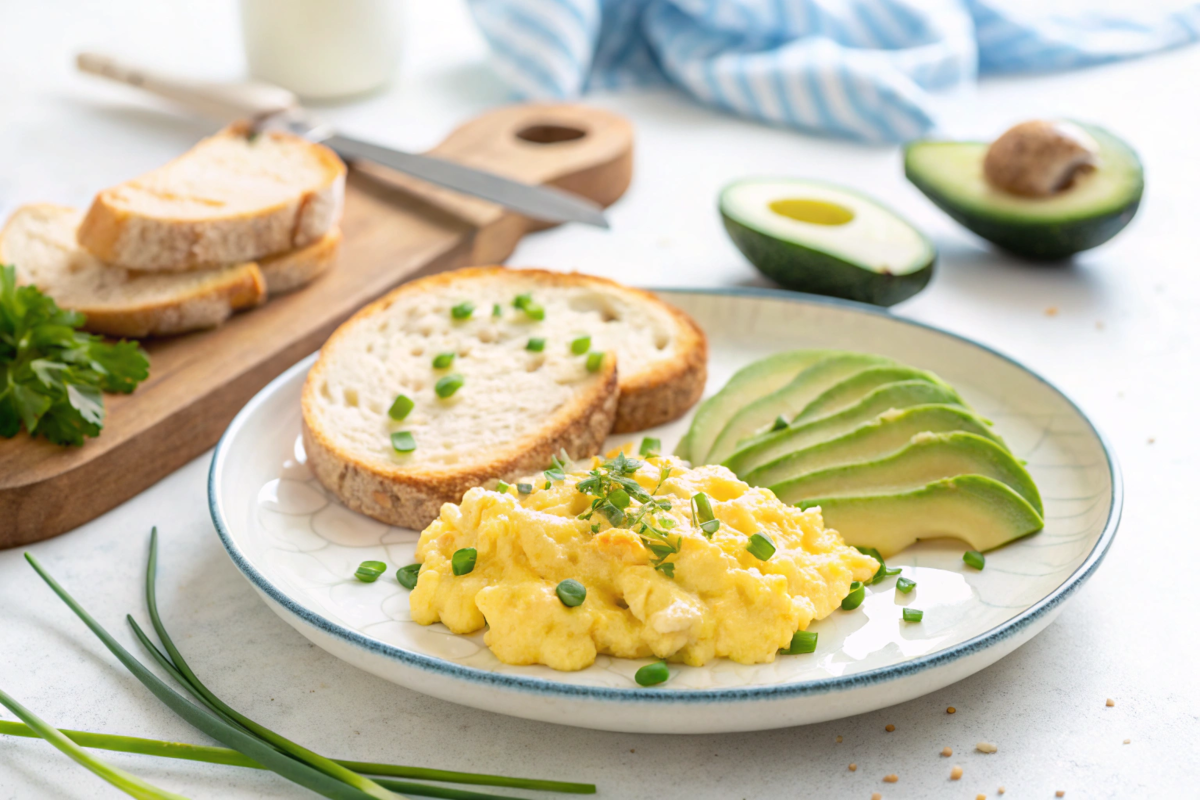Cooking Time Table
| Preparation Time | Cooking Time | Total Time |
|---|---|---|
| 10 minutes | 20 minutes | 30 minutes |
Introduction : Is cottage cheese in scrambled eggs good?
Is cottage cheese in scrambled eggs good? If you’re looking to elevate your breakfast game, this question might be on your mind. Combining cottage cheese with scrambled eggs isn’t just a passing trend—it’s a delicious and nutritious way to start your day. This pairing blends creamy textures with fluffy eggs, offering a breakfast experience that’s hard to beat. Moreover, it’s a simple trick to boost the protein content of your meal without adding extra complexity to your cooking routine.
Adding cottage cheese to scrambled eggs not only enhances the flavor but also brings a host of health benefits. For instance, the cheese provides calcium, protein, and probiotics, while the eggs deliver essential vitamins and minerals like vitamin D and choline. Together, they create a perfect harmony of taste and nutrition. If you’ve ever been hesitant to try this combination, don’t worry—it’s easy to prepare and highly customizable to suit your preferences.
In this article, we’ll explore why this pairing works so well, share tips for making the perfect scrambled eggs with cottage cheese, and discuss variations to suit different dietary needs. So, if you’re wondering whether this breakfast idea is worth trying, the answer is a resounding yes! Let’s dive into the details.
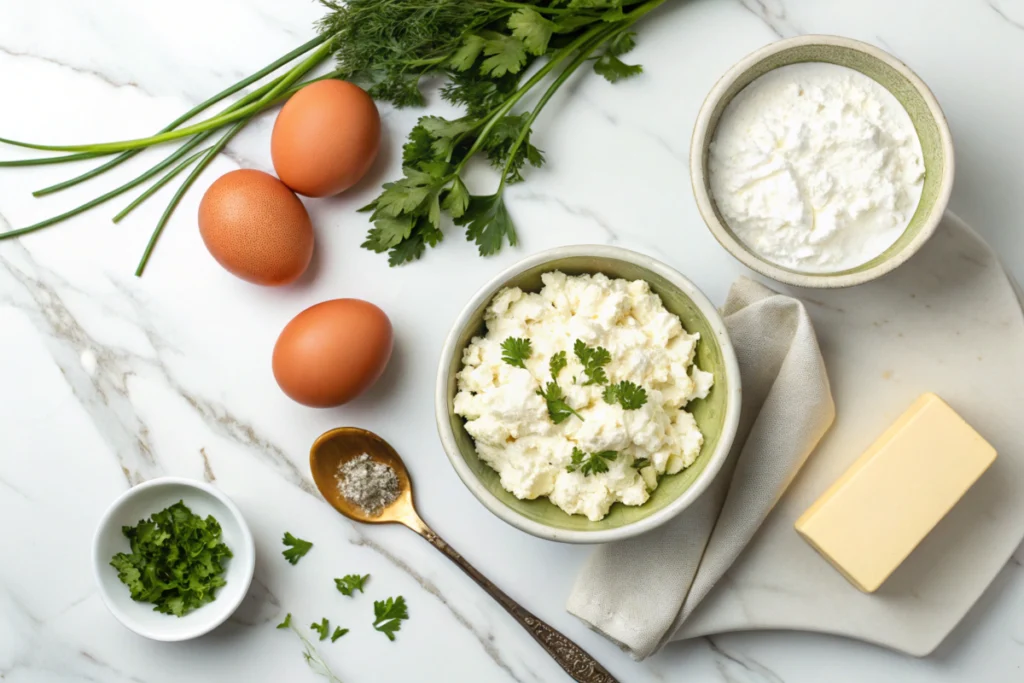
Ingredients for Cottage Cheese in Scrambled Eggs
When preparing scrambled eggs with cottage cheese, the ingredients are simple yet transformative. By combining these basic items, you’ll achieve a breakfast that’s both satisfying and flavorful. Not only are these ingredients easy to find, but they also allow for substitutions to suit dietary needs.
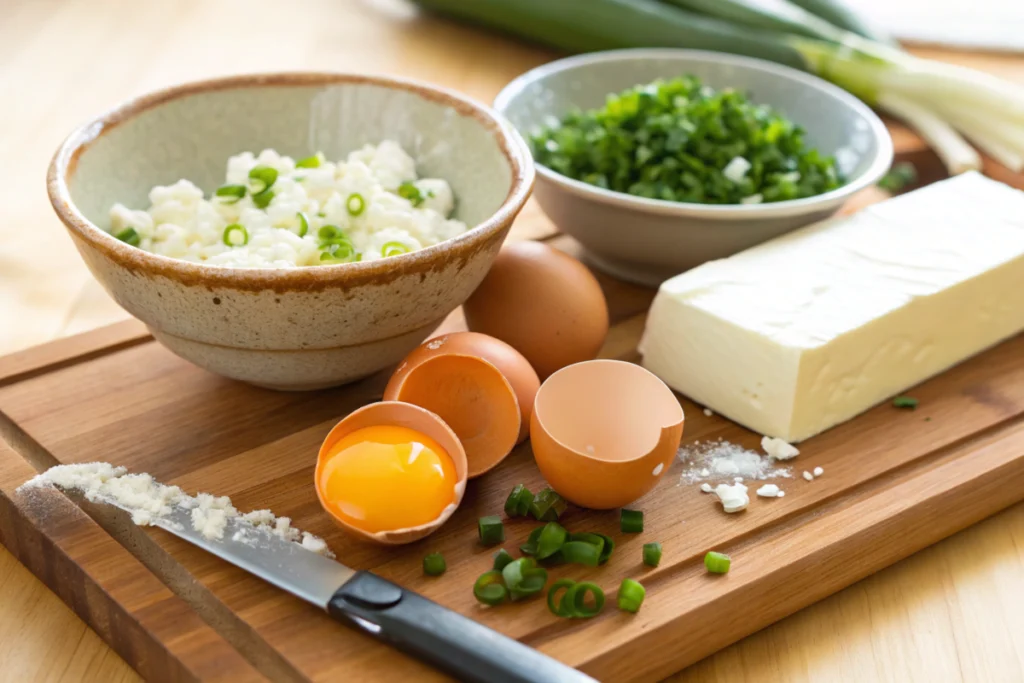
Main Ingredients
- Eggs
The foundation of this dish, eggs provide a fluffy texture and essential nutrients like protein, vitamin D, and choline. Opt for fresh, free-range eggs for the best taste and nutritional value. - Cottage Cheese
Cottage cheese adds creaminess and a mild tang that elevates the scrambled eggs. Choose full-fat, low-fat, or even lactose-free versions based on your preference. For a smoother texture, use small-curd cottage cheese. - Butter or Oil
A small amount of butter or oil prevents the eggs from sticking to the pan and enhances their flavor. Butter creates a richer taste, while a neutral oil like avocado oil works well for a lighter option.
Optional Add-Ins
- Herbs and Spices
Fresh herbs such as parsley, chives, or dill can brighten the dish. A pinch of salt, pepper, and even paprika or garlic powder can add depth to the flavor. - Vegetables
Diced tomatoes, spinach, or bell peppers make excellent additions. These not only enhance the dish’s nutritional profile but also add color and texture. - Cheese
If you’re a cheese lover, consider adding a sprinkle of shredded cheddar or parmesan alongside the cottage cheese for an extra cheesy flavor.
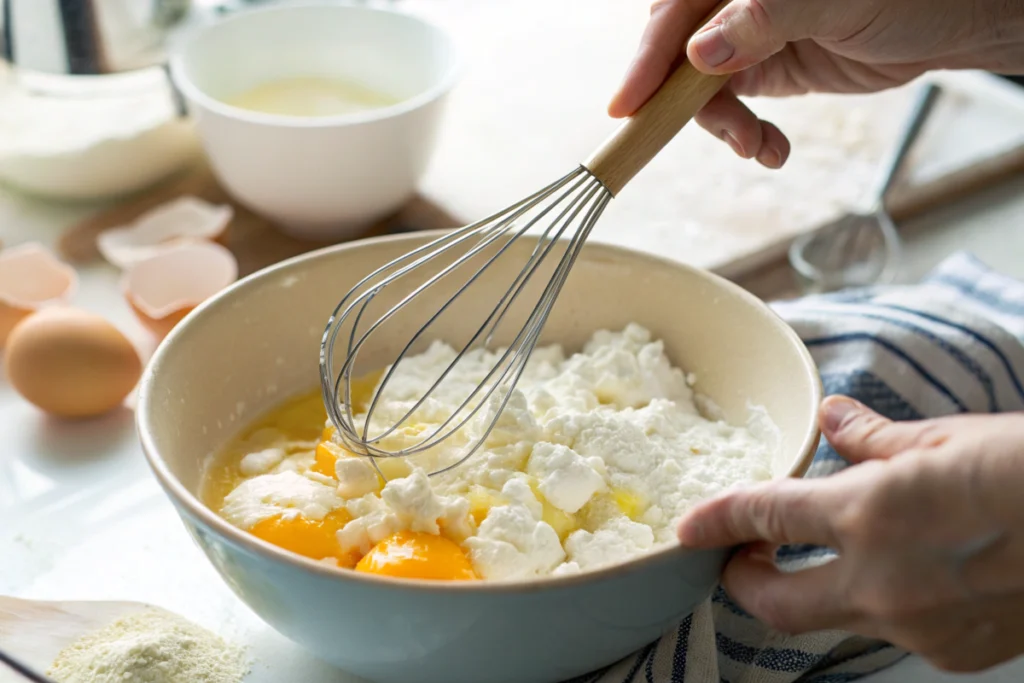
Substitutions and Variations
If you’re following a specific diet, don’t worry—this recipe is highly adaptable. For a vegan option, try scrambled tofu with a dairy-free cottage cheese substitute. On the other hand, if you’re aiming for a keto-friendly meal, stick to the original ingredients while ensuring you use full-fat cottage cheese.
By carefully selecting your ingredients, you can tailor this dish to meet your needs. Whether you keep it simple or get creative with add-ins, these ingredients work together to create a breakfast that’s delicious and wholesome.
Preparation Guide for Cottage Cheese in Scrambled Eggs
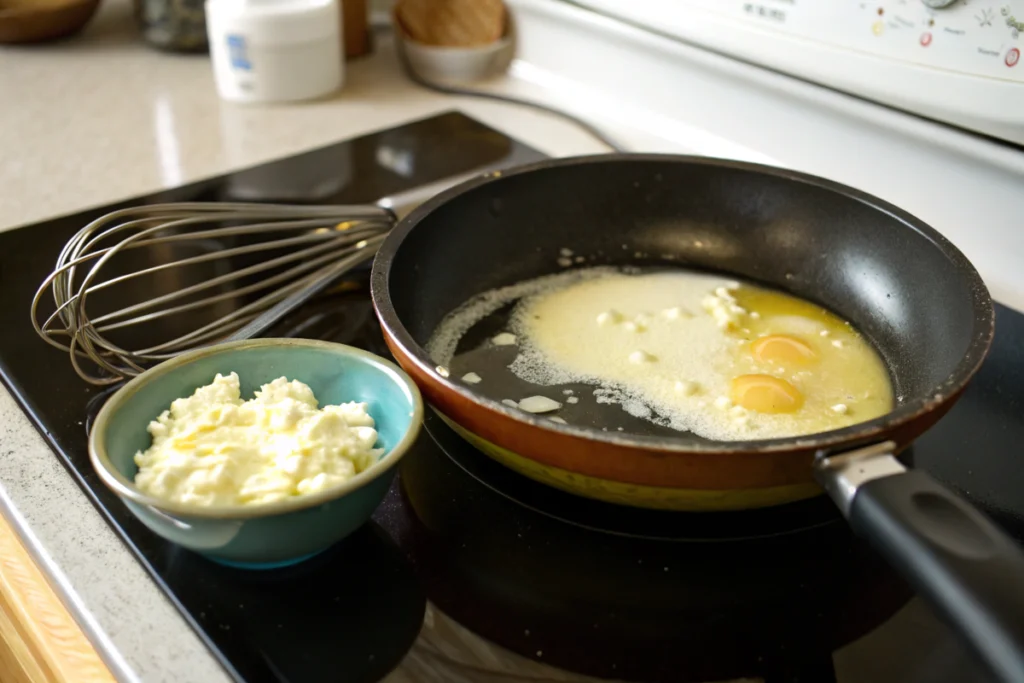
Making scrambled eggs with cottage cheese is as simple as it is rewarding. With a few straightforward steps, you can prepare a dish that’s creamy, fluffy, and packed with flavor. To ensure the best results, follow these tips and techniques carefully.
Gather Your Tools
Before you begin, it’s helpful to have the right equipment on hand. You’ll need:
- A non-stick skillet
- A whisk or fork
- A mixing bowl
- A spatula
If you don’t have a non-stick skillet, a well-seasoned cast-iron pan can work just as well.

Whisk the Eggs and Cottage Cheese
In a mixing bowl, crack the eggs and add a dollop of cottage cheese. A general rule of thumb is to use one tablespoon of cottage cheese per egg, but you can adjust based on your preference. Whisk the mixture thoroughly until the eggs and cheese are well combined. This step ensures the texture is consistent and creamy.
Heat the Pan
Place your skillet over medium heat and add a small amount of butter or oil. Allow it to melt and coat the pan evenly. Once the butter begins to bubble or the oil shimmers, the pan is ready.

Cook the Eggs
Pour the egg and cottage cheese mixture into the skillet. Let it sit for a few seconds to allow the bottom layer to set slightly. Then, gently stir with a spatula, moving the cooked eggs from the edges toward the center. Continue this process until the eggs are softly scrambled and just set.
Season and Serve
Before removing the eggs from the heat, season with salt, pepper, and any additional herbs or spices you like. Serve immediately for the best texture and flavor.
Troubleshooting Tips
- Overcooked Eggs: To avoid rubbery eggs, cook over medium to low heat and remove them from the pan just before they are fully cooked.
- Watery Mixture: If your eggs seem too runny, reduce the amount of cottage cheese slightly or cook them a bit longer over low heat.
With these steps, you’ll create scrambled eggs with cottage cheese that are both delicious and foolproof. Whether you’re making this dish for a quick weekday breakfast or a leisurely weekend brunch, it’s sure to become a favorite in your recipe rotation.

Cooking and Serving Scrambled Eggs with Cottage Cheese
Step-by-Step Cooking
| Step Number | Description |
|---|---|
| 1 | Gather all ingredients and tools needed for the recipe. |
| 2 | Preheat the pan and begin preparing the base ingredients. |
| 3 | Cook the dish, following the recipe instructions step by step. |
Once you’ve mastered the preparation, cooking and serving scrambled eggs with cottage cheese is a breeze. By paying attention to timing and technique, you can ensure that every bite is perfectly cooked and bursting with flavor. Moreover, how you serve this dish can make all the difference, transforming a simple breakfast into a delightful dining experience.
Cooking Tips for the Perfect Scramble
- Start Low and Slow
Cooking scrambled eggs over medium-low heat ensures they remain creamy and tender. If you rush and use high heat, the eggs might cook unevenly, becoming rubbery. Instead, be patient and stir gently for the best results. - Use Gentle Motions
While cooking, use a spatula to gently push the eggs from the edges toward the center of the pan. This technique helps create soft curds, giving your scrambled eggs a luxurious texture. At the same time, avoid overmixing, as it can make the eggs dense. - Know When to Stop
It’s important to remove the eggs from the heat while they’re still slightly undercooked. Residual heat will finish the cooking process, leaving you with perfectly soft and creamy eggs.
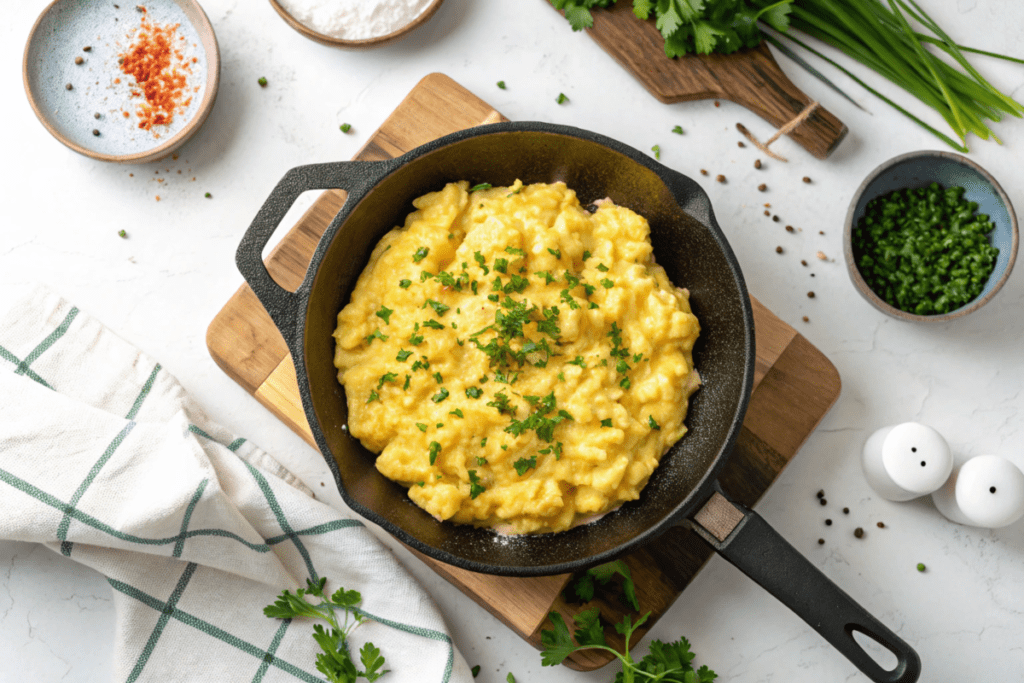
Serving Suggestions
Now that your scrambled eggs with cottage cheese are ready, it’s time to serve them in style. Adding thoughtful garnishes and accompaniments can elevate your dish and make it more satisfying.

- Garnish with Fresh Herbs
Sprinkle freshly chopped chives, parsley, or dill over the eggs for a pop of color and a burst of freshness. These herbs not only look appealing but also add subtle flavors that complement the dish. - Pair with Toast or Bread
Serve your eggs with a slice of crusty whole-grain toast or a buttery croissant. The bread adds texture and makes the meal more filling. For a low-carb option, try pairing the eggs with sautéed greens or a small salad. - Add Extra Protein
If you’re craving an even heartier breakfast, consider serving the eggs alongside smoked salmon, crispy bacon, or turkey sausage. These additions make the dish ideal for special occasions or brunch gatherings. - Brighten with Veggies
For a healthy twist, pair your scrambled eggs with roasted cherry tomatoes, avocado slices, or steamed asparagus. The vibrant colors and fresh flavors enhance the dish beautifully.

Why Presentation Matters
Lastly, how you present your scrambled eggs can make the meal feel more special. Use a clean, attractive plate and arrange the components thoughtfully. Adding a sprinkle of freshly cracked black pepper or a drizzle of olive oil can make even a simple dish look gourmet.
With these tips, cooking and serving scrambled eggs with cottage cheese becomes an enjoyable and rewarding experience. Every step, from stirring the eggs to plating them, is an opportunity to create a dish that’s both delicious and visually appealing.
Nutritional Benefits of Scrambled Eggs with Cottage Cheese
Nutrition Analysis
| Calories | Protein | Carbs |
|---|---|---|
| 250 kcal | 15 g | 20 g |
Nutritional values are approximate and may vary based on specific ingredients and measurements.
Jump to Cooking TimeIt’s not just the flavor and texture that make scrambled eggs with cottage cheese an excellent choice—it’s the nutritional benefits as well. This combination brings together two powerhouse ingredients that complement each other perfectly, resulting in a meal that’s as wholesome as it is delicious. By understanding these benefits, you’ll see why this dish deserves a place in your regular breakfast rotation.

High in Protein
First and foremost, scrambled eggs with cottage cheese pack a serious protein punch. Eggs alone are rich in high-quality protein, which is essential for muscle repair and energy. Adding cottage cheese only increases this benefit, providing even more protein to keep you feeling full throughout the morning.
Rich in Vitamins and Minerals
In addition to protein, this dish is loaded with essential vitamins and minerals. For example:
- Eggs contribute vitamin D for bone health, choline for brain function, and selenium for immune support.
- Cottage Cheese provides calcium for strong bones and phosphorus for cellular repair.
Together, these nutrients make this combination a nutritional powerhouse.
Low in Carbs, High in Energy
For those watching their carbohydrate intake, scrambled eggs with cottage cheese offer a low-carb option that doesn’t skimp on energy. This makes it an excellent choice for low-carb or ketogenic diets, ensuring you stay fueled without feeling weighed down.
Probiotic Benefits
If you opt for a probiotic-rich cottage cheese, you’ll also enjoy gut health benefits. Probiotics support a healthy digestive system, making this dish as beneficial for your stomach as it is for your taste buds.
Customizable for Dietary Needs
Another advantage of this dish is how easily it adapts to different dietary preferences. Whether you’re aiming to add more vegetables for fiber, swap in low-fat cottage cheese for a lighter option, or increase the portion size for higher calorie needs, this recipe is endlessly flexible.
Why It’s Perfect for Breakfast
Breakfast is the most important meal of the day, and this dish hits all the right notes. It’s quick to make, keeps you full for hours, and provides the energy you need to tackle your morning tasks. Plus, it’s easy to pair with other healthy options like fresh fruit, whole-grain toast, or a green smoothie for a well-rounded meal.
By choosing scrambled eggs with cottage cheese, you’re not just indulging in a tasty breakfast—you’re also making a choice that supports your overall health and wellness. This combination of flavor and nutrition is hard to beat, making it a smart and satisfying option for anyone looking to start their day on the right note.
FAQs About Scrambled Eggs with Cottage Cheese
Here are the most frequently asked questions about scrambled eggs with cottage cheese. These quick tips and insights will help you make the most out of this delicious breakfast option.
1. Can I Use a Different Cheese Instead of Cottage Cheese?
Yes, you can substitute cottage cheese with other soft cheeses, such as ricotta or cream cheese, for a similar creamy texture. If you prefer a stronger flavor, shredded cheddar or goat cheese also works well.
Tip: When substituting, use the same quantity as you would for cottage cheese, and adjust for flavor intensity.
2. How Do I Prevent My Eggs from Becoming Watery?
Watery eggs can occur if the mixture isn’t whisked enough or if it’s cooked too quickly on high heat.
Tip: Always whisk the eggs and cottage cheese thoroughly until the mixture is smooth, and cook over low to medium heat for better control.
3. Can I Make This Dish in Advance?
While scrambled eggs are best served fresh, you can prepare them ahead of time and store them in the fridge for up to 2 days.
Tip: Reheat gently in a non-stick pan over low heat or in the microwave for short intervals to avoid overcooking.
4. What Are Some Healthy Additions to This Recipe?
You can add a variety of vegetables like spinach, diced tomatoes, or mushrooms to boost the fiber content. Herbs such as chives or dill add freshness and enhance the flavor.
Tip: Sauté the vegetables beforehand to avoid extra moisture that can affect the eggs’ texture.
5. Is This Dish Suitable for Kids?
Yes! Scrambled eggs with cottage cheese are not only kid-friendly but also an excellent way to pack in protein and calcium for growing children.
Tip: Customize the dish by adding mild cheeses or cutting veggies into small pieces for a fun and nutritious breakfast.
6. Can I Freeze Scrambled Eggs with Cottage Cheese?
While you can freeze scrambled eggs, the texture of the cottage cheese may change upon thawing, becoming slightly grainy.
Tip: If you plan to freeze, consider omitting the cottage cheese and adding it fresh after reheating.
7. What’s the Best Type of Pan to Use?
A non-stick skillet is ideal for making scrambled eggs as it ensures even cooking and prevents sticking.
Tip: If using a stainless-steel pan, preheat it thoroughly and add enough butter or oil to coat the surface evenly.
8. How Can I Add More Flavor Without Adding Calories?
Fresh herbs, spices, and a squeeze of lemon juice are great ways to enhance flavor without adding extra calories.
Tip: Experiment with seasonings like smoked paprika, garlic powder, or even a pinch of curry powder for a unique twist.
By addressing these common questions, you can refine your technique and discover new ways to enjoy scrambled eggs with cottage cheese. These tips and tricks make it easier to customize the dish, troubleshoot common issues, and ensure a perfect breakfast every time.

